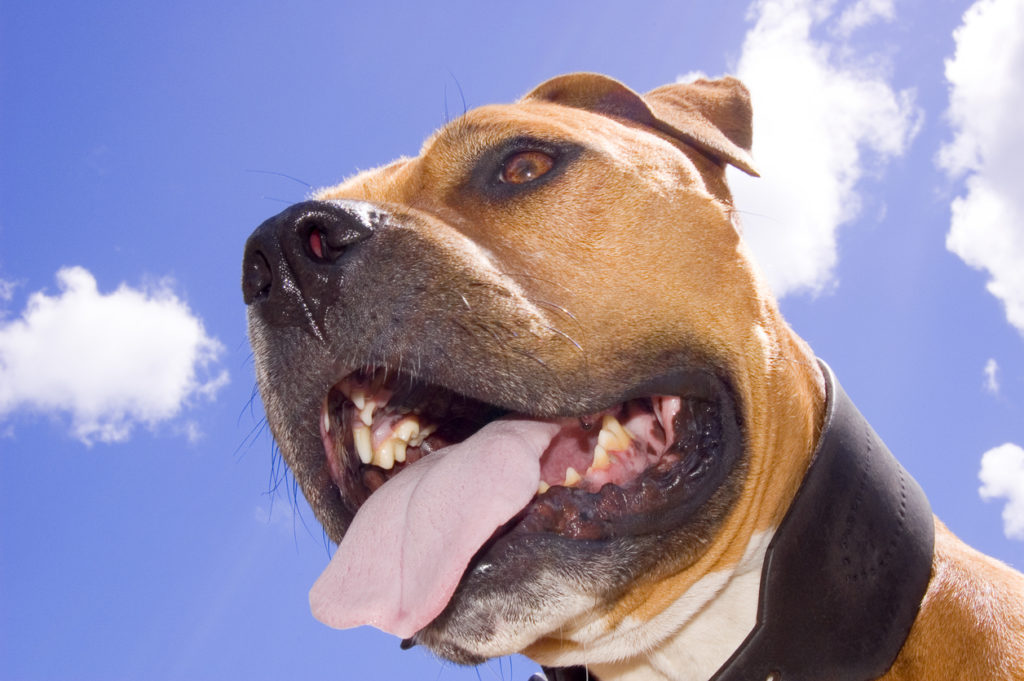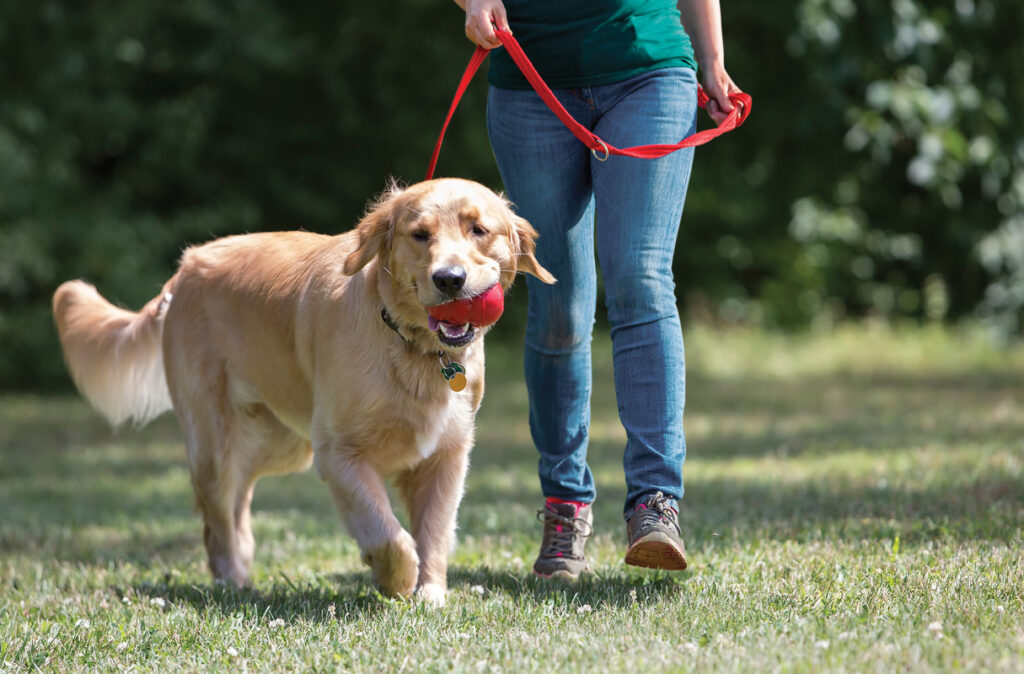You may have a pesky skin tag on your body, like on your neck or underarms. For humans, skin tags are common occurrences that are usually not concerning. They are common, and the odds are that you either have one or will develop one as you age: It’s estimated that half of humans have or will have a skin tag in their lifetime.
Skin tags, also referred to as acrochordons, can occur where your skin tends to move on itself. This makes skin tags common in places like your underarms, neck, and even near the eyelids. Healthwise, they are not harmful unless they become irritated.
Like humans, our dogs can also experience skin tags. Skincare isn’t just for one group of the animal kingdom; it’s for all of us! Let’s chat about identifying skin tags and what to do about them.
What Do Skin Tags Look Like on Dogs?
As you pet your dog, you may notice a new bump on their skin. After much inspecting, you see that this lump is attached to the skin by a stalk-like structure. If this is the case, this bump might be a skin tag.
Skin tags are seen frequently in older dogs and larger breeds. Despite their typical structure, skin tags can vary in size and in appearance.
A Note About Skin Tags
Skin tags are generally harmless. However, skin tags aren’t always what they appear to be. Skin tags can look just like a number of other dermatological conditions, including warts, ticks, or skin tumors.
Malignant skin tumors can take on many different appearances, with a common one called Mast Cell Tumors prompting the nickname “The Great Imitator.” Any new growths on your dog warrant a trip to the vet within a few weeks of popping up. Your vet will know which tests to perform to diagnose this new growth as a skin tag or a more dangerous imposter.
What Causes Skin Tags on Dogs?
It is not understood exactly why skin tags form, but there are a few ideas that pet experts are trying on for size:
The first hypothesis is that cells in your dog’s skin may be overproducing collagen and connective tissue. Another reason some vets back is that perhaps your dog experiences constant friction on an area of their body (think a collar that is too snug). Areas of pressure points and creases, like your dog’s elbows, can be prime areas for skin tags to form.
How Do You Treat Skin Tags on Dogs?
This is the ultimate time to insert a “do not try this at home” disclaimer:
If you want your dog’s skin tag removed, consult your dog’s veterinarian for the best course of action. Since skin tags are usually benign, most pet parents leave them unless the skin tags are irritating the dog.
Skin tags can be disruptive, like if the skin tag prevents your dog’s eyes from shutting on their own, or one that they constantly get caught on when they scratch behind their ear. Some pet parents also elect to have skin tags removed for cosmetic reasons.
Never try to remove a skin tag on your own, as it can be painful for your dog. If you were to try to remove the skin tag, it could create a wound that might result in an infection.
How Vets Might Approach Skin Tag Treatment
If your veterinarian believes removing your dog’s skin tag is in the pup’s best interest, your vet will likely take a biopsy first. Your vet might want to rule out other concerns, like potential tumors. Your veterinarian may also be able to take a small number of cells from the area with a small needle.
Monitoring the skin tag for some time may be an option as some skin ailments can resolve independently. If your dog’s veterinarian decides that removing the skin tag is necessary, they will be able to determine how much skin needs to be removed. This planning ensures that all cells that make up the tag are successfully removed. Doing this will ensure that the chance the skin tag doesn’t come back or if it does, it comes back much smaller and less intrusive.
There are a few ways of removing skin tags and other skin growths. Each is taken into consideration by your dog’s veterinarian. The best option could depend on the size of the growth, the location of the growth, and the odds of it recurring.
Some treatment options include cryosurgery, which uses extreme cold. This is similar to having a wart frozen off. Another is cauterization, in which the growth is burned off. Potentially, general surgery might be needed. In this scenario, your vet might remove the growth with a scalpel.
Other Skin Growths
There are multitudes of skin disorders that can affect our dogs. While skin tags are the most common, let’s take a look at some other common ailments that can be seen on our dogs. Although most skin masses are benign, the best practice is to take your dog to their veterinarian for further inspection and testing.
Basal Cell Tumors
These types of tumors are common in our canine friends. These tumors can be mistaken for skin tags, as they also attach to the skin with a stalk-like structure. However, cysts can form from these tumors and become infected.
The good news is that most basal cell tumors are benign. Removing these in surgery helps reduce the chance of infection and potential discomfort.
Lipoma
Lipomas are made of fat and are commonly found in older dogs. Especially so if the dog is overweight. Most lipomas do not cause issues, but if they grow large, then surgery may need to be considered.
Papilloma
If your dog has a wart-like spot near their mouth, this could be a papilloma. If your dog goes to the dog park or doggy daycare, there is even more reason to confirm this as a papilloma as these spread quickly.
Generally, papillomas tend to resolve themselves, and additional treatment might not be necessary. They are seen in younger dogs, as their immune system is still developing.
Follicular Cyst
A follicular cyst can be compared to ingrown hairs in humans. These cysts occur when your dog’s hair follicle is blocked.
They are usually on the smaller side but can grow larger and form in multiples. This type of cyst can cause discomfort for your dog, especially if it does rupture. Once it ruptures, it can become infected.
Ticks
Although ticks are not a skin ailment, skin tags can be commonly mistaken for ticks. Ticks are around the same size and shape as a skin tag, but pulling a skin tag can be a little more painful for your pup than pulling a tick.
Ticks are often darker in color, and skin tags are usually the same color as your pet’s skin. This is good news if your pet has lighter-colored skin. If your dog has darker-colored skin, use a magnifying glass to see if you can spot legs, indicating that this skin tag is a tick.
Ticks are sometimes harmless but can transmit diseases, including Lyme disease. Ask your vet for advice.
Stay Happy and Healthy
Being a member of the KONG Club can help give you the tools to raise happy, healthy dogs (and cats). The KONG Club app provides access to virtual veterinarians and pet coaches who can guide you through any health, behavior or lifestyle issues!
Stay Calm and Walk on
When finding a new bump or lump on your dog’s skin, your first reaction may be to hop on the internet immediately and try to diagnose the issue yourself. This usually causes nothing but dread and panic. Instead, contact your KONG Club 24/7 veterinarian to get the answers and guidance you need!
Even if it’s nothing, you’ll feel better after chatting with a veterinarian. Our vets can give you quality peace of mind. Knowing that you’ve spoken with a trained professional can keep your thoughts from racing around and leaving you pacing more than a cat on a fence.
Let KONG Club be your trusty sidekick when it comes to supporting the health and wellness of your pet. You’ll love having the support, and your dog will love your love. A win-win for everyone!
Sources:
Mayo Clinic Q and A: What are skin tags? | Mayo Clinic
Skin Tags (Acrochordons) | Cleveland Clinic
Tumors of the Skin in Dogs – Dog Owners | Merck Veterinary Manual
Benign Skin Masses of Dogs | MSCPA.org
Should You Be Concerned About Fatty Tumors on Your Dog? | The Animal Medical Center



